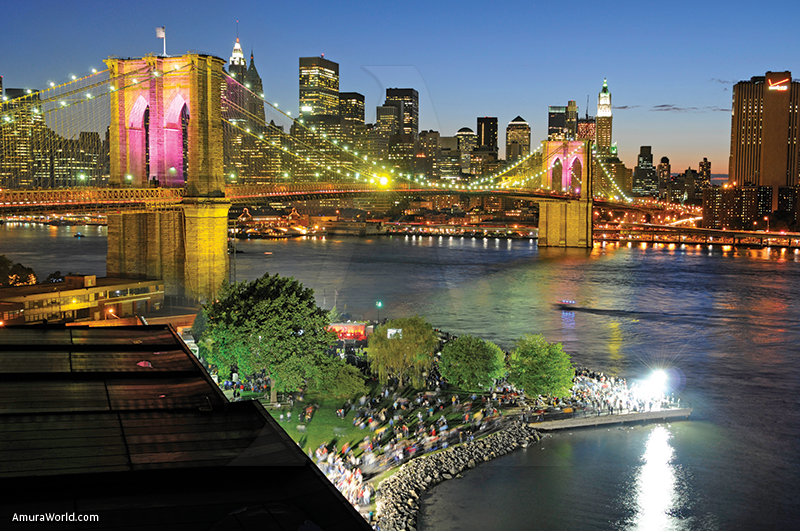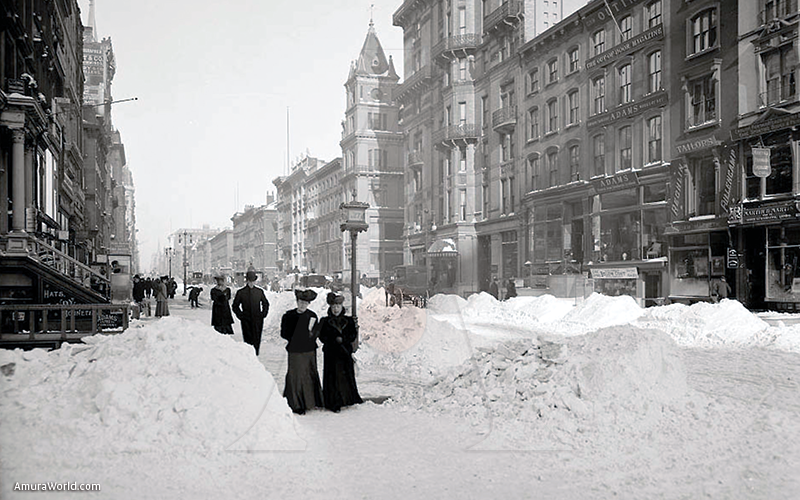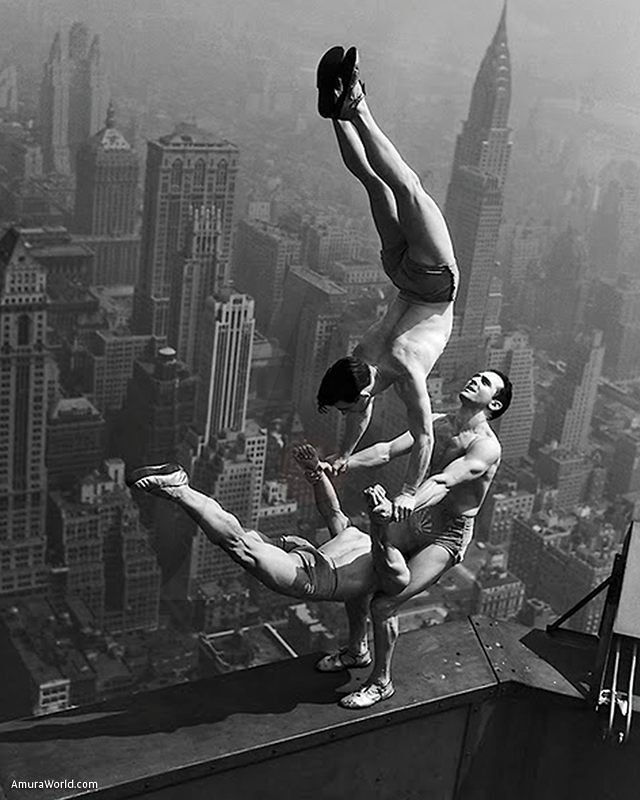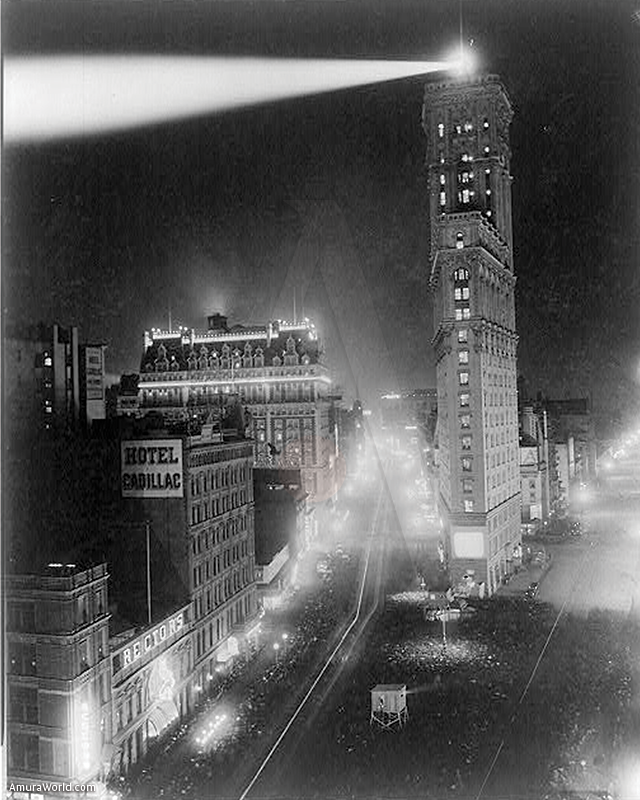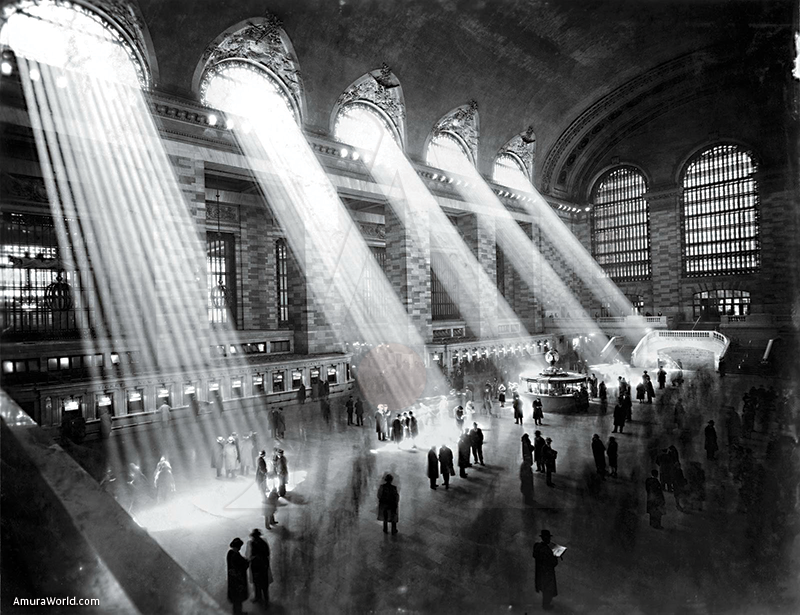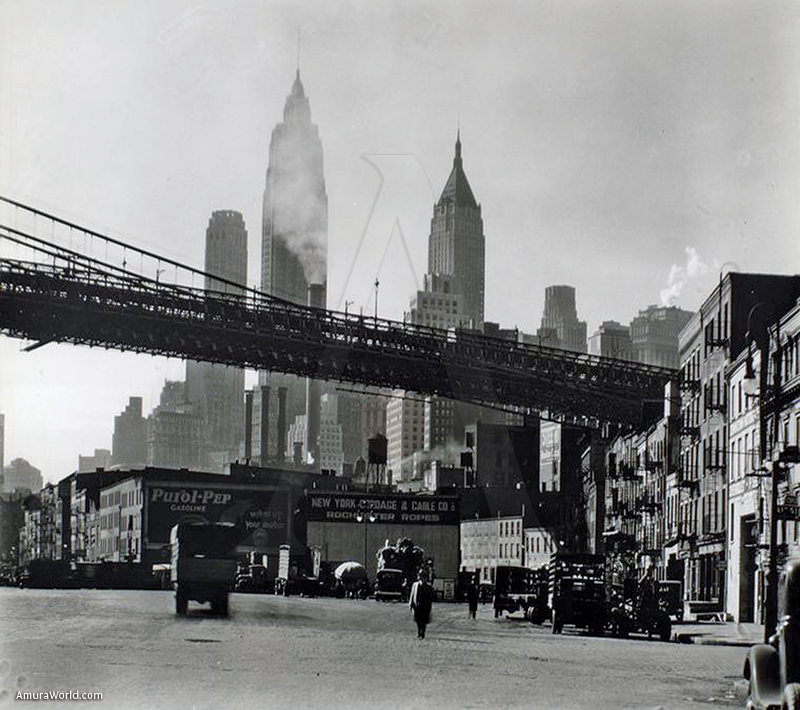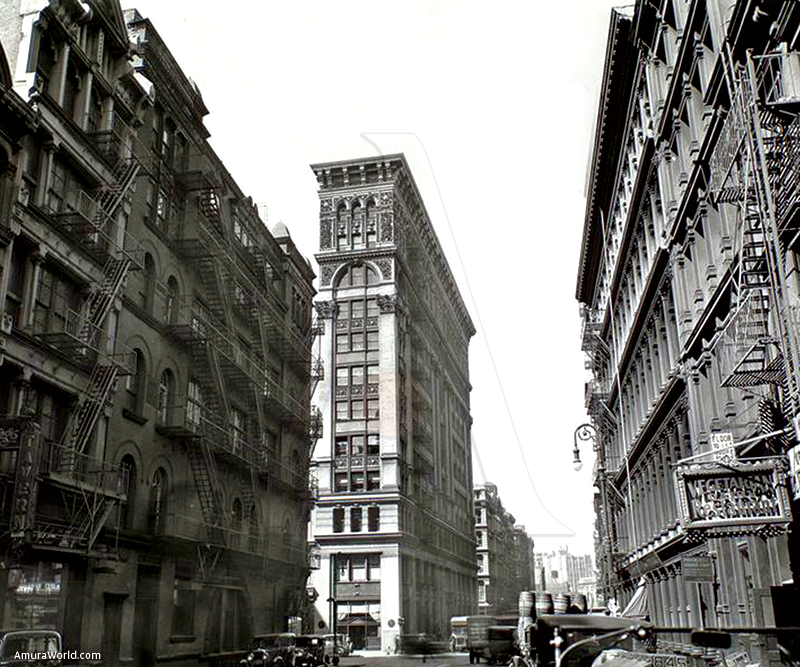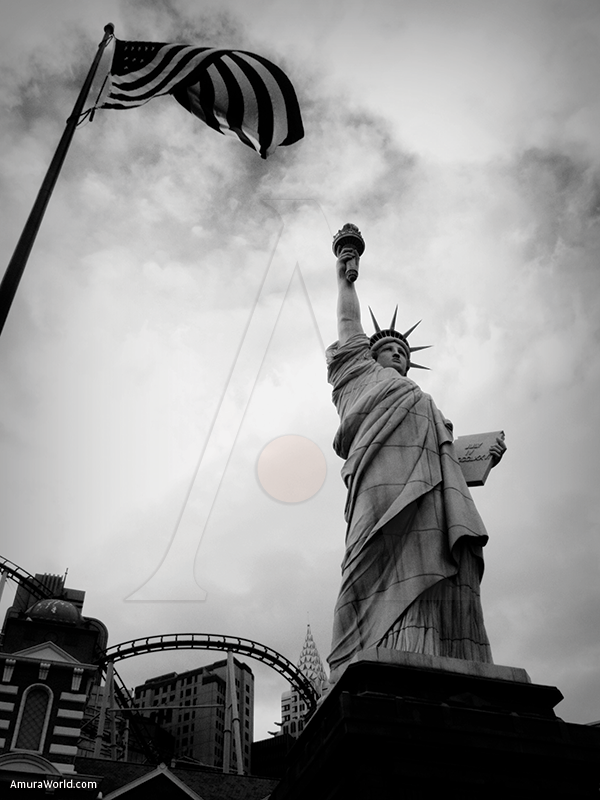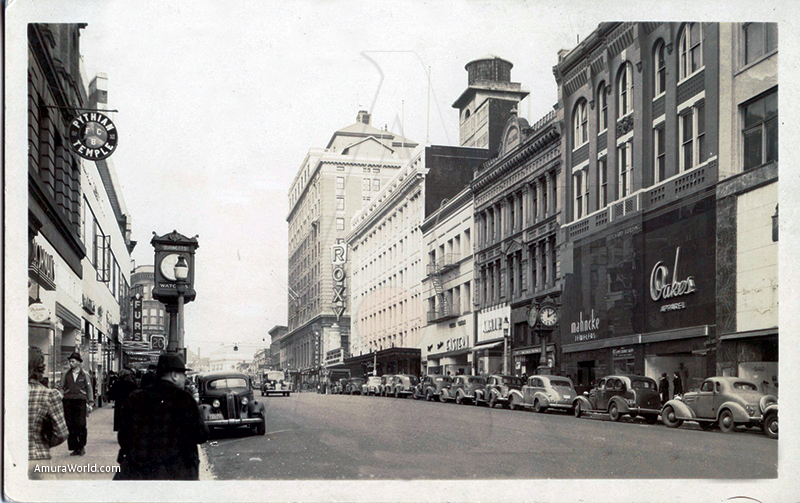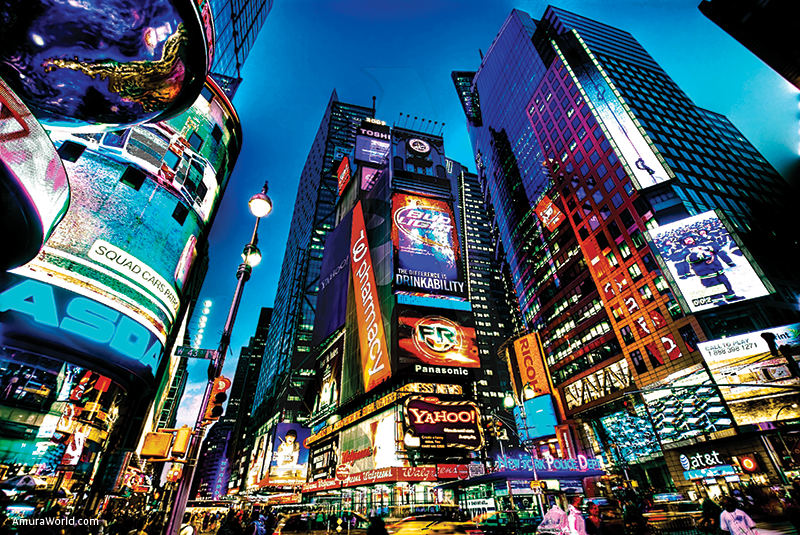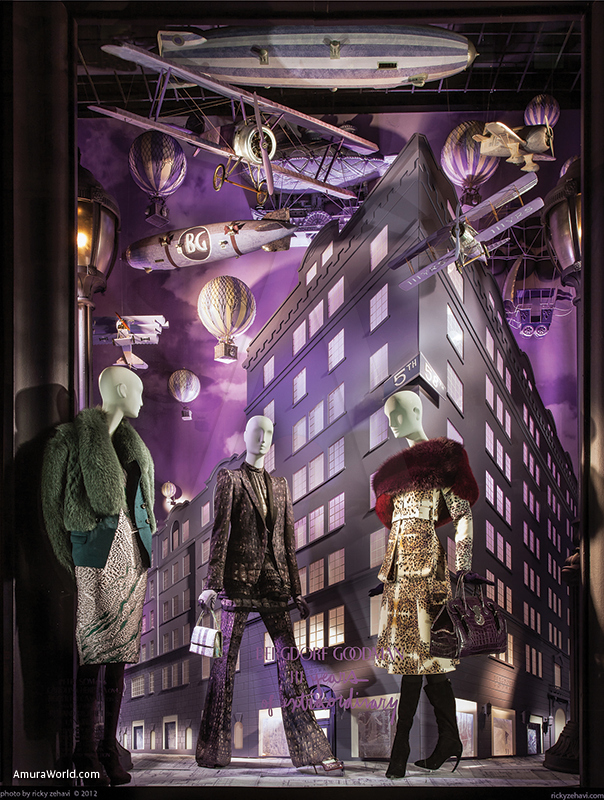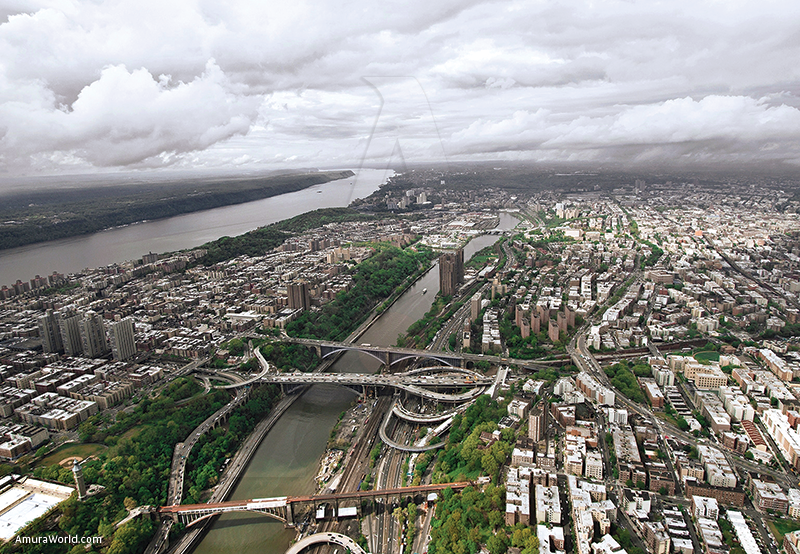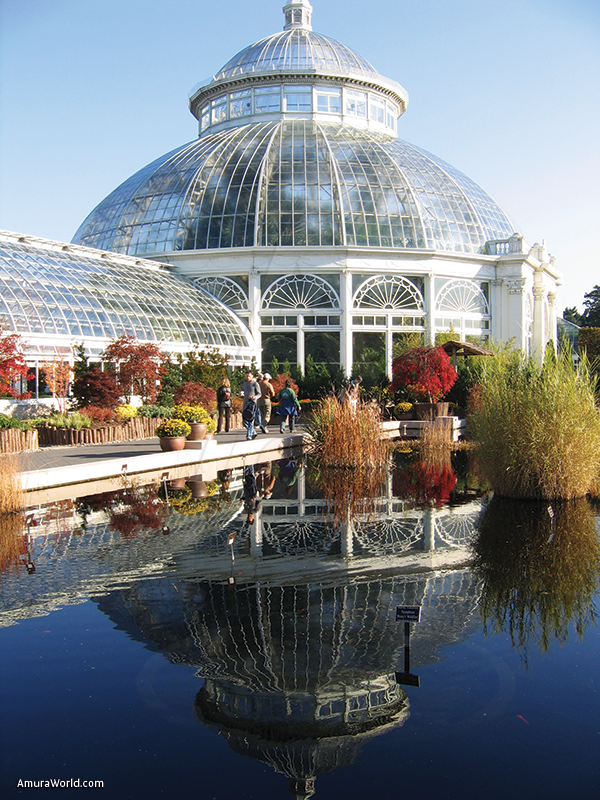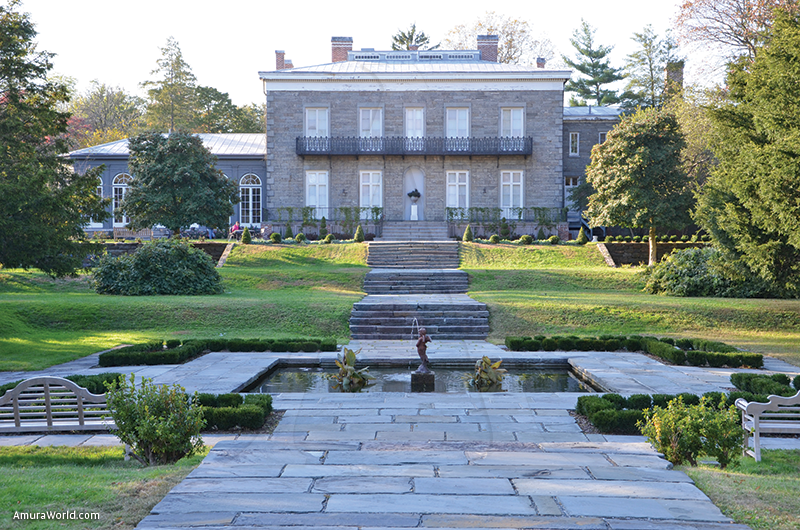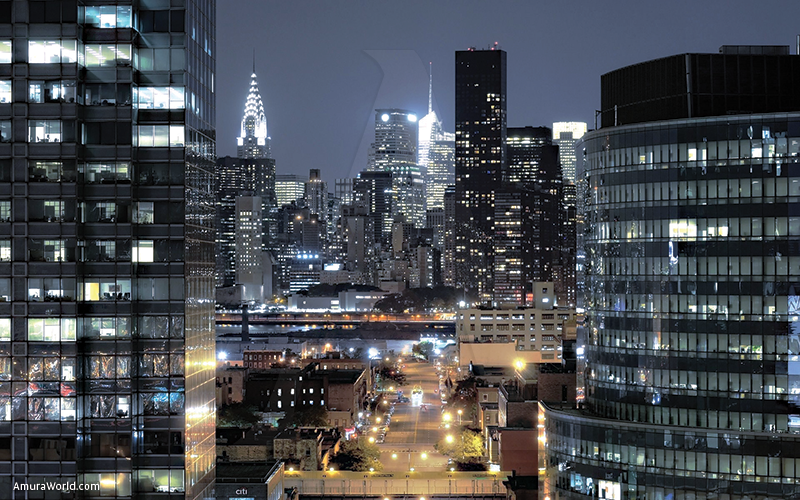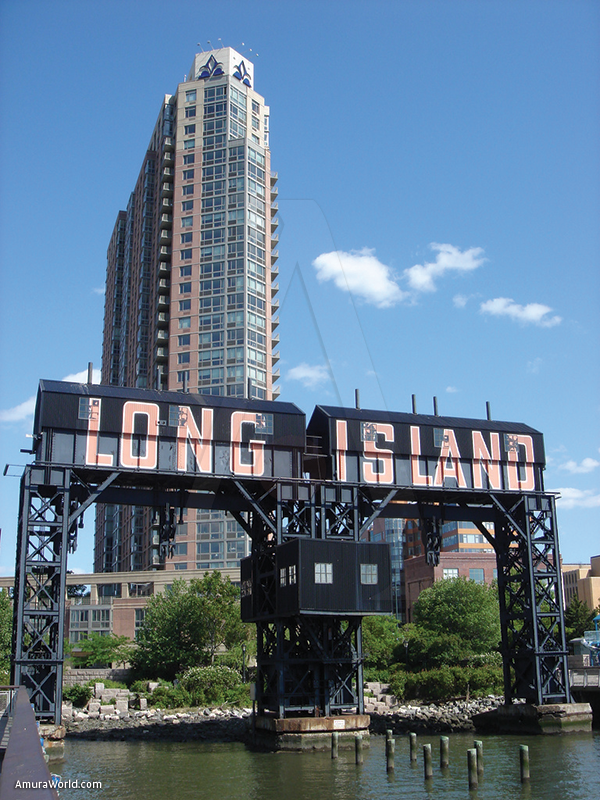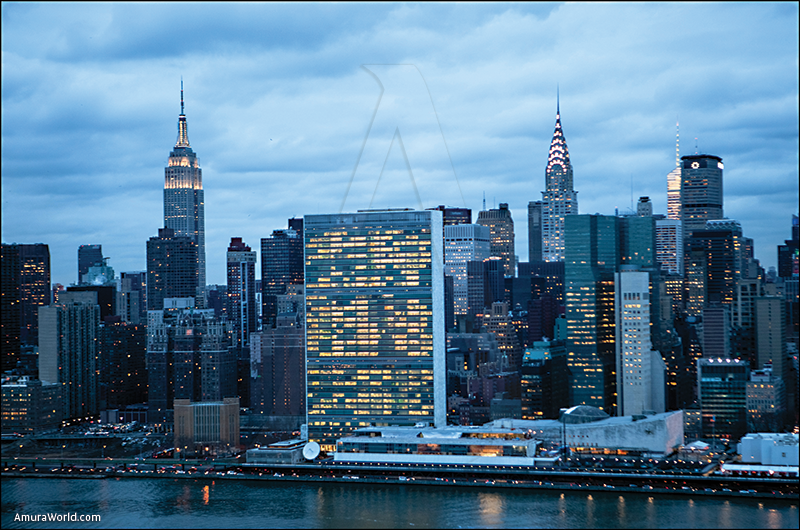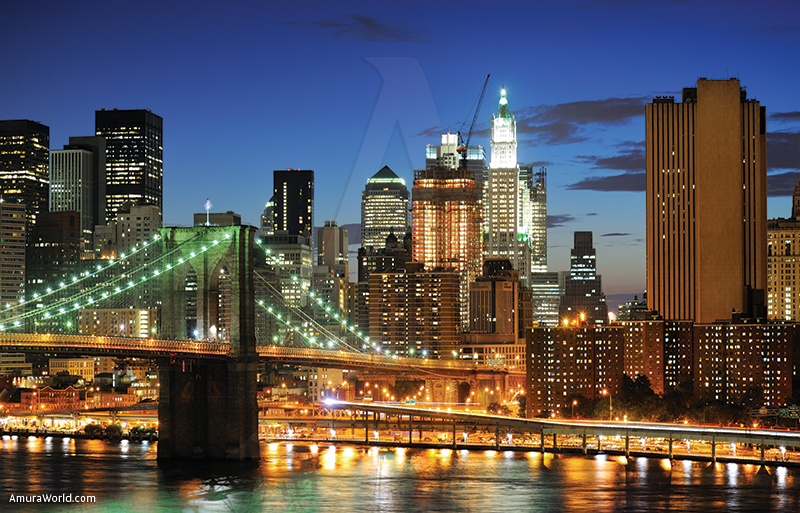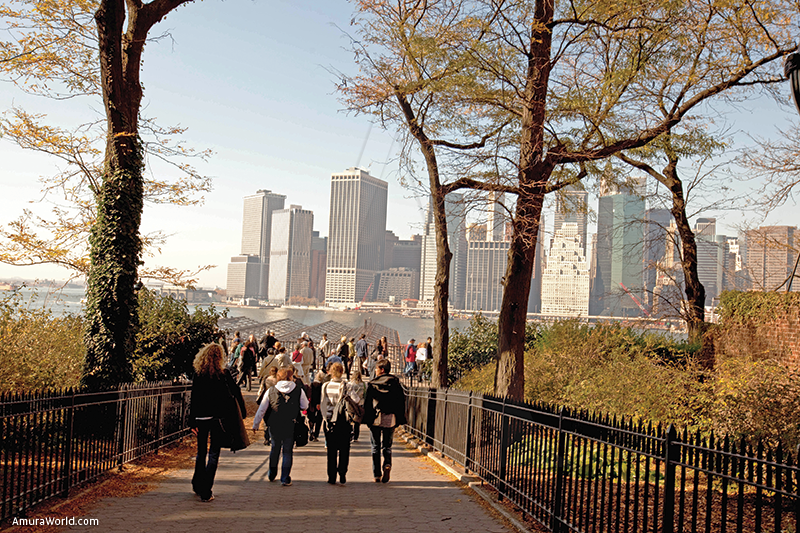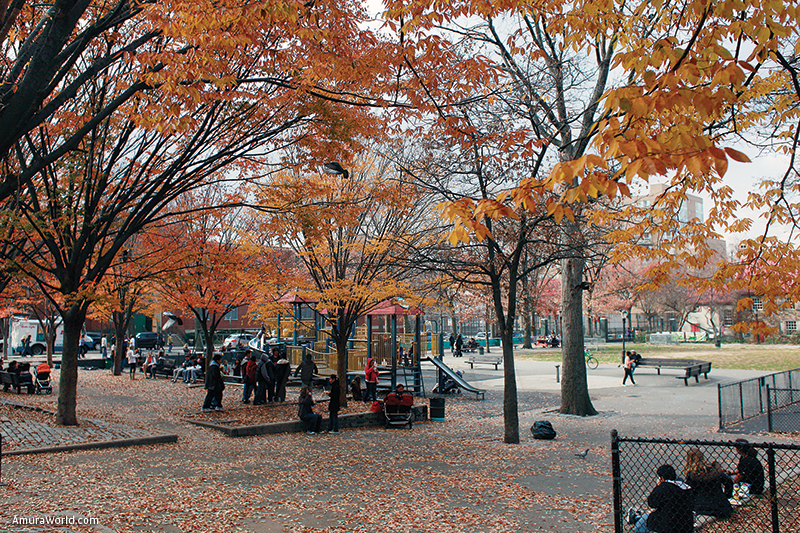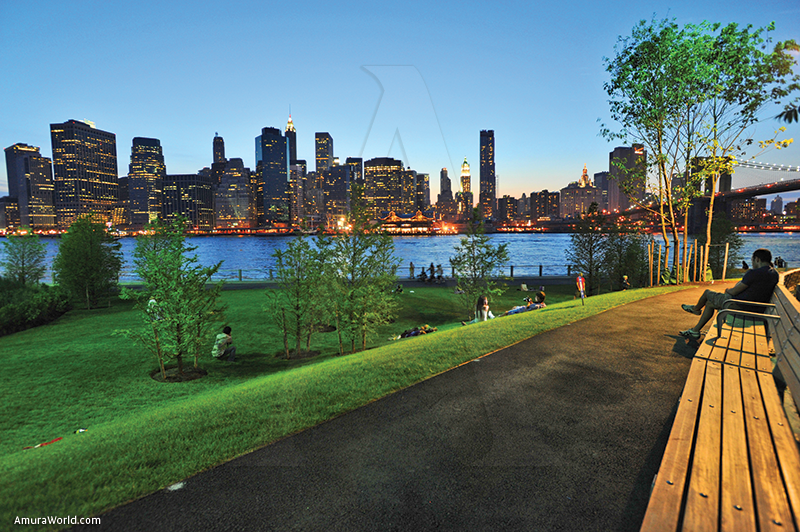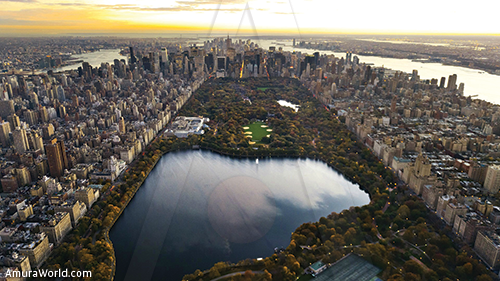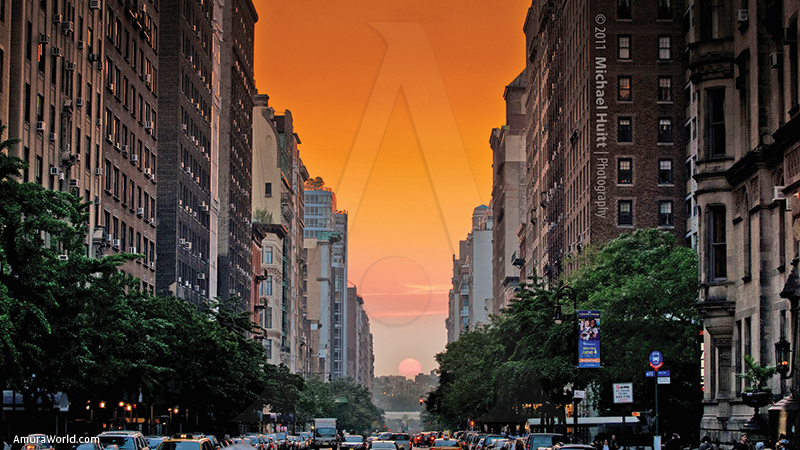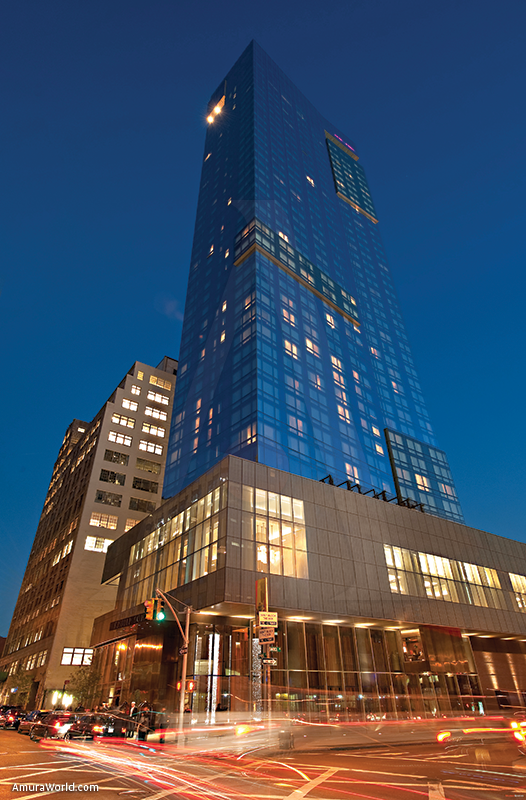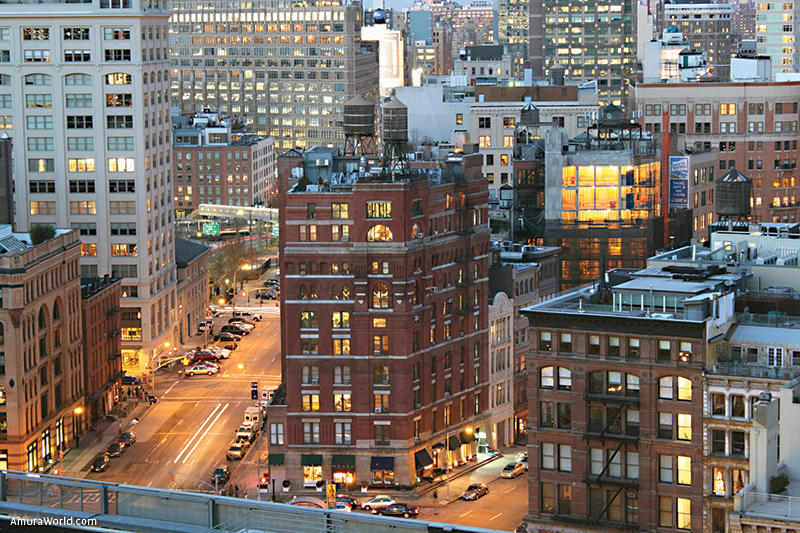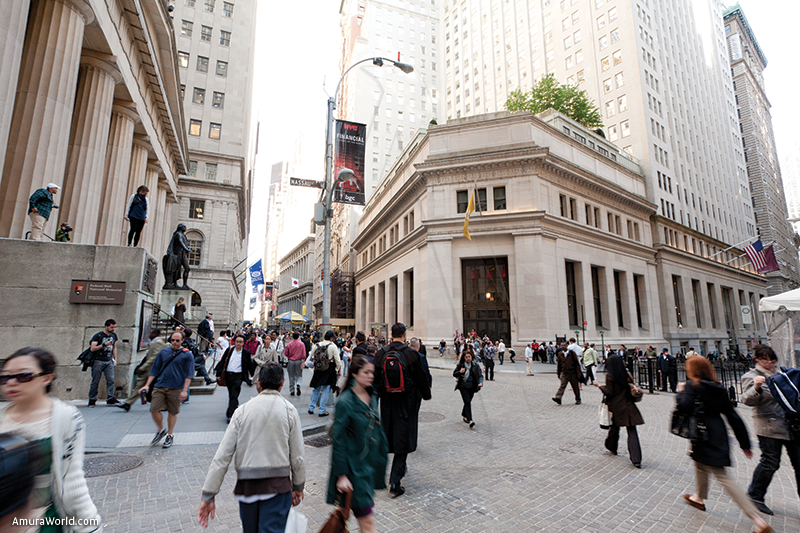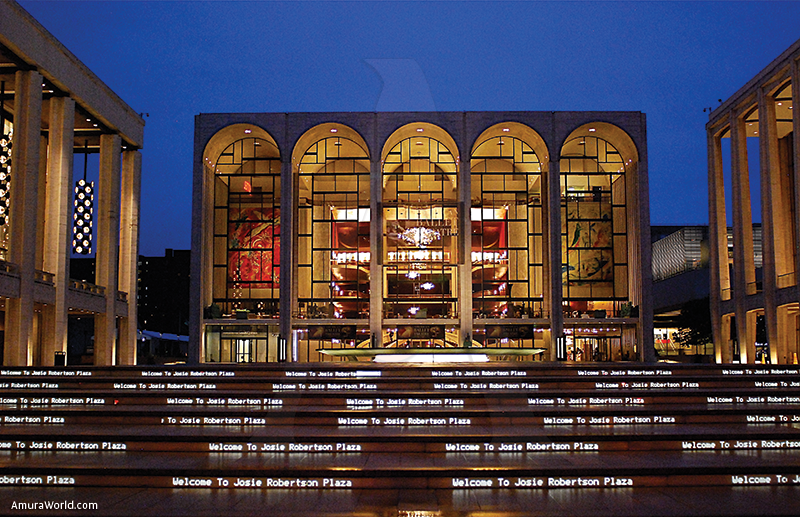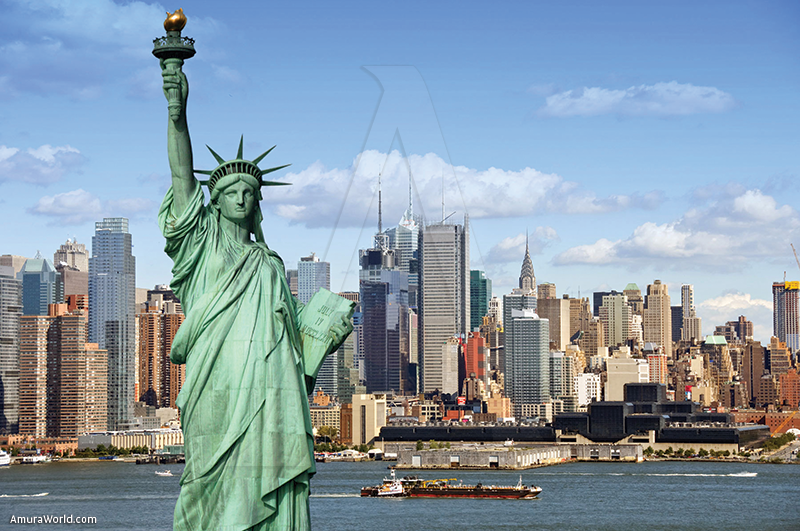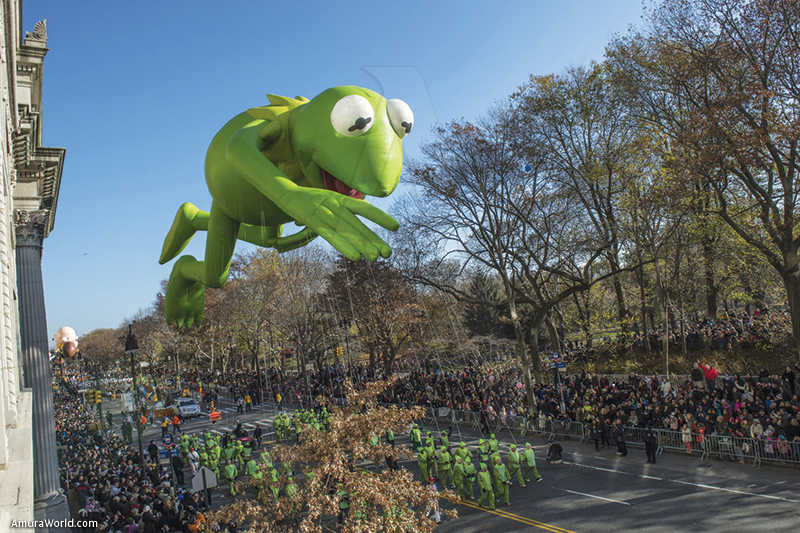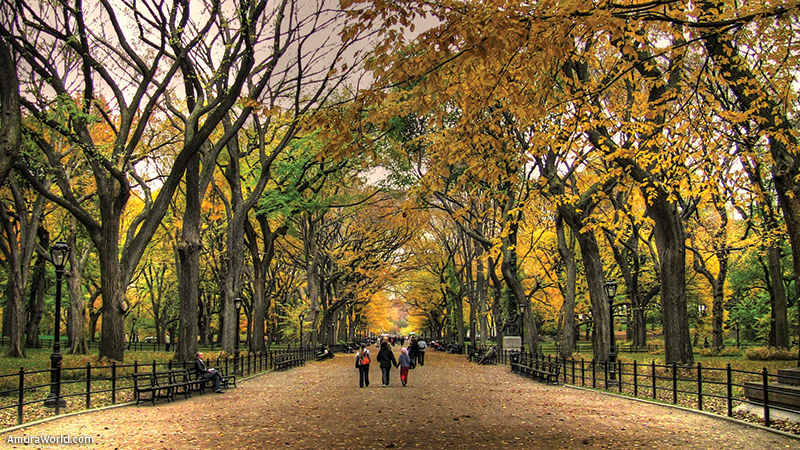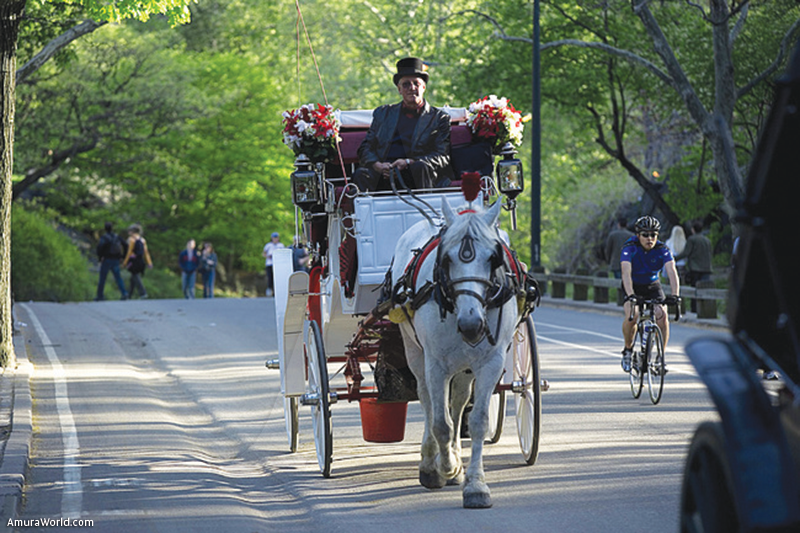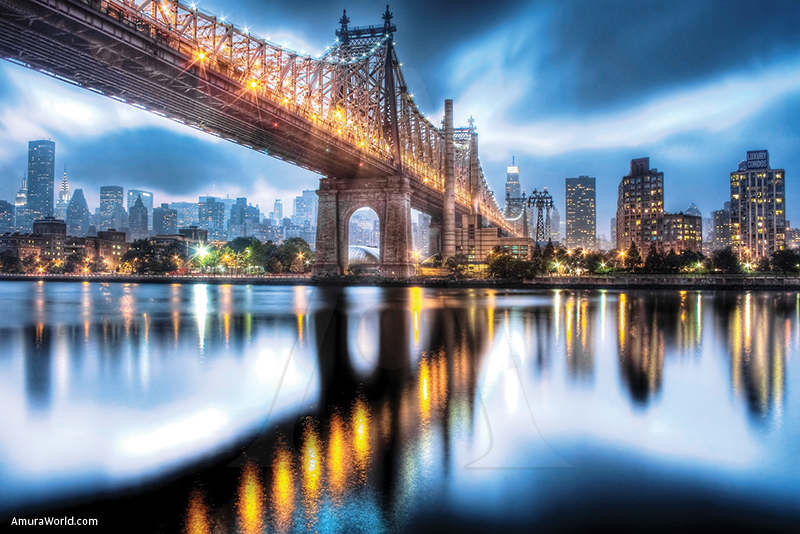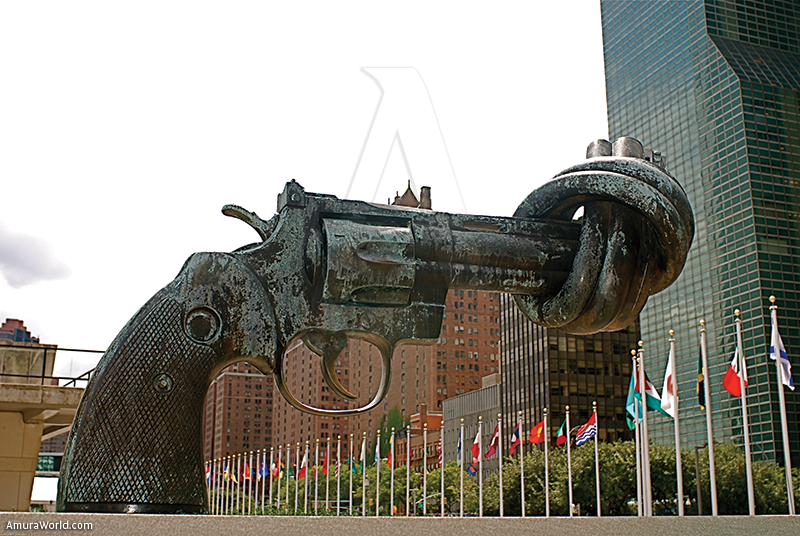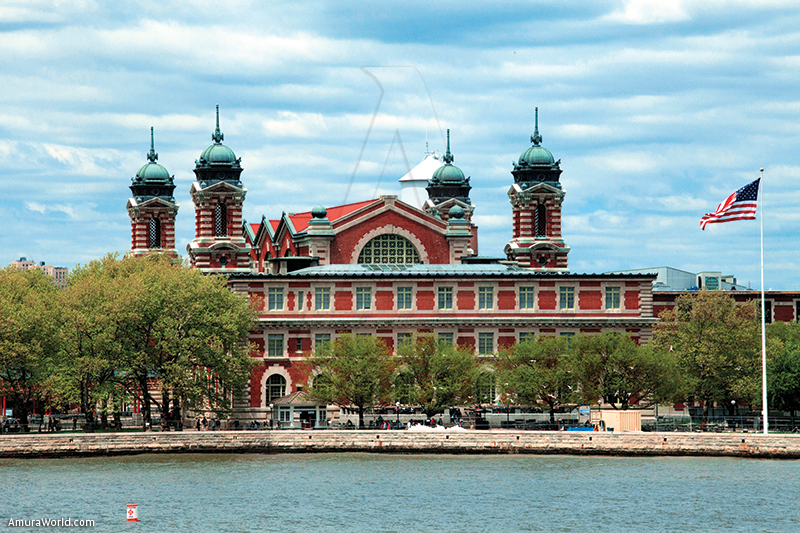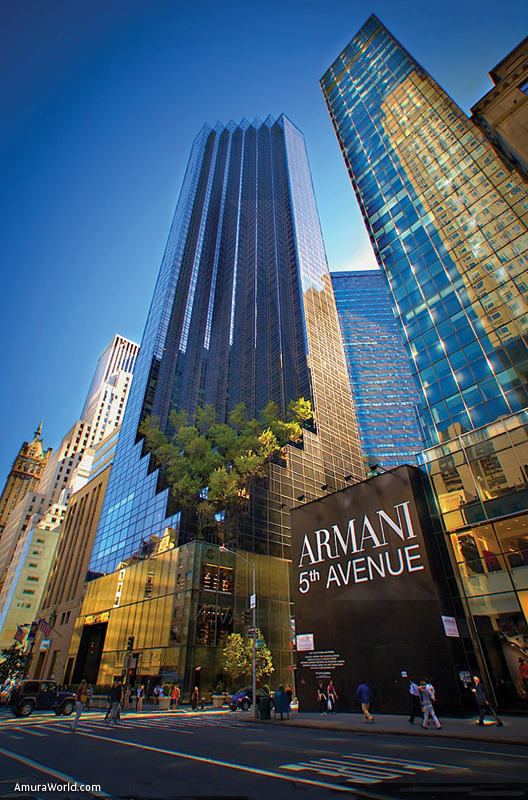Where history reached port
It’s complicated to imagine the beginning of a thing that is already established, that has been created and rises, proudly, imminently, and intimidating. A city that, by itself, defines “cosmopolitan,” that overwhelms the senses with its movements. Its story remains tangible to this day.
The establishment of New York City took several years, and began with the occupation of the territory by Native American tribes. These lands where explored by the navigator Giovanni da Verrazano in 1524, who as the service of the French crown, yet, after almost 70 years, it was the Englishman Henry Hudson who arrived at the waters of a river that would bear his name, and who began a journey that formed a proper expedition. “These will be lucrative lands for those who dare venture in them.” Hudson did not err. During his expedition, on a September morning, he had a vision of the future.
Welcome to New Amsterdam
In was a new world, and this meant a new economy. The colonies began to expand rapidly. Adrien Block was amongst the new occupiers, he who began the colonization of Connecticut, and he allowed for his new travel companions the opportunity to begin a new lives. Block was an expert navigator, and followed on Hudson’s steps.
The first people to arrive at was is now Manhattan were the Dutch. As time passed, more colonizers arrived and settled in Manhattan, which became dotted with fur factories.
The first Director in charge of the colony of Manhattan was Peter Minuit, who had an audacious plan: Buy land from the native tribes. As soon as a price was reached, prosperity arrived at the new territory. A church, sawmill, and a bakery were built, though not supervised by Minuit. Wouter Van Twiller served as his lieutenant. Regardless, he was found guilty of making illegal transactions soon after. These events created a time bomb, and the burden of heavy taxation on the natives, coupled with the contraband of fur, led to a great massacre between the native tribes and the Dutch. John Underhill, an English mercenary, led a massacre himself that destroyed several tribes, yet this event eventually led to a period of piece that began in August, 1645.
A change of pace
Peter Stuyvesant, the new Dutch Director, had to deal with a series of problems that he inherited from his ancestors: fur contraband, the slaughtering of native families, and tax evasion; although some of his efforts paved the way for the construction of a hospital and the first lottery. By 1653, New Amsterdam enjoyed privileges similar to the ones found in the motherland. The recent construction of a tobacco plantation near a river became a popular destination for women seeking to wash clothes. This place is now known as Wall Street.
In spite of this, a conflict brewed on the horizon. In 1652, England declared war on the Dutch. The English colonies were ready to initiate battle against N ew Amsterdam, and insisted that the natives were conspiring to capture New England. Stuyvesant built a fortified wall (Wall Street) to the east of the Hudson River. The war was avoided, however, and peace between the two nations was reinstated.
It seemed like the English and the Dutch competed for land and industry in this new world, and for that, in 1664, Charles II, King of England, presented his brother, James Stuart, the Duke of York, with the entire territory (including New Holland.) A short time after, numerous ships under the Duke’s command arrived at Coney Island. The city of New Amsterdam was only 40 years old when it became New York, in honor of Prince Charles’s brother.
Let the English arrive
In 1667, an important number of arriving Englishmen arrived to port in order to buy land. Not only was the population expanding, but also agriculture, the tobacco industry, and fishery. Business flourished, and naval activity in the reached the waters of what is now known as New Jersey. During this time of English occupation, religion diversified.
A pact between the Kind of England the King of France contained a proposition of obliterating Dutch trade routes. In response, the Governor of Holland sent battleships that retook control of the city in 1673. New York was renamed, “New Orange.” This action had consequences, and Holland was not able to finance the expenditures of war against two vast empires. They reluctantly gave up the territory they had acquired from the English once again. The New Orange only lasted for a year, and was renamed again in 1674. To emphasize its position, England declared Edmund Andros as Governor of the city of New York.
Not all the glitters is gold
New York was divided into four geographical regions that were established in 1638, during the tenure of Thomas Dongan as Governor. It was not until the 20th century that a fifth region was formed: the Bronx.
In an effort to consolidate this new land, the King ruled over the New England territory and the domains of New York. The former Governor Andros moved to Boston to facilitate the process. Meanwhile, in England, King James abdicated the throne, and William of Orange, a Dutchman, was named William III. During this period, Andros was jailed. The colonel Henry Slouther took charge as Governor in 1689. Yet, as soon as he passed away, Mr. Fletcher, a savvy real estate agent and ingenious politician, was assigned to the post.
Tea time brings consequences
King George III advisers collected funds for the colonies in order to sustain thousands of soldiers sent to the New World as deterrent for the French aggression. Thanks to this, the English parliament passed the “Stamp Act.” Goods such as certificates, cards, and journals, required a special stamp to collect funds. While the colonists did not protest this novel arrangement in order to safeguard the troops, others raised their concerns towards the tax for having no say on the matter; nevertheless, the Stamp Act was abolished 12 months later.
And yet, in 1766, the passing of the Townsend Acts declared new duties would be imposed on glass, paper, paint, and tea. The colonists were outraged, and as a consequences, bloody riots exploded in the region. On April, 1776, British goods became contraband inside the New York territories. The English troops evacuated the city. Soon after, the English attacked Manhattan; the undisciplined militia quickly surrendered to the besieging troops. Manhattan thus became the principal quarters for the English.
The fall of the last colonial fort, Fort Washington, to the English was a catastrophe for the colonist, as it led to a massacre. A great fire of unknown origin decimated the New York City. It had to be rebuilt, and as such, English culture became dominant in Manhattan. Lord Charles Cornwall surrendered to the troops at Yorktown, Virginia, which came to be seen as much-needed sign of peace. On October 19th, 1781, the war was declared over.
A star is born
Almost 100 years passed before Fernando Wood became mayor of the city, and the colonists of New York faced dire political adjustments. It all took place in 1855, when Wood became the first Mayor to occupy Tammany Hall. Fernando was an Irish immigrant supported by the Democratic Party, which, at the time, dominated the local ideology.
During the American Civil War (1861-1865) the commercial ties of the city focused on the south, the immigrant population grew in numbers, and resentment towards the draft led to a split in core beliefs that gestated the Union and the Confederacy. These events led to the riots of 1863. Shortly after the Civil War, the number of immigrants coming from Europe grew exponentially, and New York City became the first stop for millions of people looking for a new and better life in the United States.
Hope is to be found in Ellis Island
Large-scale immigration began during the first decades of the 19th century. Between 1815 and 1915, over 33 million immigrants arrived at the United States. Three-quarters of these immigrants passed through the port of New York. Two large immigration centers were set up in the 19th century: Castle Garden, and Ellis Island. Nevertheless, in 1882, the United States imposed a charge of 50 cents on new arrivals. In 1890, the federal government took charge of the immigration process, and in 1892, Ellis Island, located at the mouth of the Hudson River, established itself as the most important immigration center in the land. Between 1892, and 1956, over 12 million immigrants made their way through Ellis Island. The first and second class passengers who disembarked on the New York bay were not inspected, while other passengers endured inspections that lasted from three to five hours and included physical examinations and interrogations. The United States Bureau of Immigration, and the United States Public Health Service were in charge of processing the immigrants.
Immigrations in New York City in the 19th and 20th century came about in two colossal waves. The first presented itself in the 1840s, led by the elderly, mainly from Ireland and Germany. In 1880, the immigration rates from Western Europe fell, only for the numbers to surge in central and Eastern Europe, especially in Russia. The immigrants stormed New York City, and were forced to take low-paying jobs.
The Americans were afraid that it would be difficult for the immigrants to adapt, for even though they considered the Irish and the Germans to be accustomed to democratic regimes, the Jews, the Russians, and the Italians had never experienced democracy. They frowned upon the immigrant communities as “ghettos,” and thus, at the end of the 19th century, programs meant to “Americanize” the immigrants were implemented in public schools. Americanization was an integral part of the Hudson-Fulton celebrations.
The new immigrants
Immigrants are what made New York City a city of the world. The cultures, traditions, and beliefs of those who came from abroad contributed to the worldly nature of the city. Each person that laid its eyes on the Statue of Liberty felt the promise of a fresh start, each one carrying within a story, a name, and the memory of a family that had been, or should had been forgotten. These men and women, boys and girls, trusted in New York, and in return for their sacrifice and blind expectations of a better life, the land gave back to them, pushed them to their limits, and thus created a unique culture. Its value is palatable to this day.
The Sound of Iron
In 1898, with the consolidation of Brooklyn and Manhattan, the modern New York City was formed. Manhattan and the Bronx became two separate neighborhoods, linked by three other neighborhoods created from adjacent counties to form a new municipal government originally called “New York.” In 1914, the New York Legislature formed the Bronx County, and created five adjoining counties along with the five boroughs that exists to this day.
In 1920, the race for the sky began. Buildings began to appear seemingly overnight. Open air spaces along Park Avenue were filled with condominiums and other residential buildings. The railroads of Grand Central Terminal slowly morphed into an underground subway system. Park Avenue was simply enchanting at this point. The Art Deco movement took Manhattan by storm. This type of architecture generated a great impact between 1925 and 1940.
In spite of the new infrastructure, an imposing era was rolling in. The events that unfolded during the 1930s overwhelmed the city. Excess was a form of life, despite Prohibition, and the city vibrated with the movement of its inhabitants. Along the first half of the 20th century, New York City became the global headquarters of industry, commerce, and communication.
The accelerated pace of the city and its high crime and poverty rate ended when the First World War interrupted the commercial trade routes and the flow of immigrants. This gave rise to the so-called “barons” of the Golden Age. Throughout the 1940s, New York City was an important destination for African-Americans during the Great South American Migration.
The Harlem Renaissance flourished during the 1920s and the Prohibition era coincided with the largest economic boom that led to the development of the now iconic skyscrapers.
What the future holds
The American Dream was real and it prospered. New Yorkers were hungry for art, culture, money, and experience. But near this era of prosperity a sinister shadow began to grow larger and larger, one which came across the Atlantic. The Second World War had begun.
In four years, a staggering amount of commercial activity prompted by the war had the economic engines of the city running at peak power, driving the city to a new level of economic power previously unseen. At the end of the 1940s, New York had turned in the largest industrial center in the world, with 40,000 factories, and over a million workers toiling inside them. It was the most important port, overseeing 40% of the good being shipped into the country. And, it was the financial capital of the globe, moving hundreds of millions of dollars through its markets every day. And it was, above else, the home of immense corporations: 135 of the nation’s 500 leading enterprises had headquarters in the city. Standard Oil, General Electric, U.S. Steel, Union Carbide, IBM and RCA, just to name a few.
More than ever, the window that lined the streets were filled with lights; there was a feeling in the air that New York was the international city; that all points led to it. The city was atypical to the continent. Now, it was the center of the world.
New York City
Known, as well, as the, “Capital of the world,” and the central financial hub, given the large number of cultures that have settled and merged over the years, as well as the number of financial transactions that are carried out daily inside the NYSE, Nasdaq, and Standard & Poors, which serve as a reference on an international scale. The city was also home of such companies as Google, at one point.
In similar fashion, entertainment venues dot the entire city. One must only walk a few shorts steps on Broadway to become acquainted with the theatre productions and musicals that are staged in and around the area, or walk alongside Rockefeller Center, or visit the exclusive shops at Fifth Avenue. This city offers a seemingly never-ending list of places to visit.
The Bronx
This county, located north of the city, faced many a challenge given the crime problems that plagued it during the 1980s; nevertheless, its appearance has changed drastically over the years. It is an area where over 75 languages are spoken (yet where Spanish and English are still dominant), thus, it has become a focal point for the Spanish-speaking community, thanks to its parks, museums, and sports facilities.
Given its proximity to food markets, the Bronx receives some of the freshest and cheapest lobster and seafood. Sammy’s Fish Box, and Sammy’s Shrimp Box are two popular places to visit. There are also antique stores where one can find all kinds of treasures.
Points of interest
- The Bronx Zoo.- With over 700 species, and 6,000 animals that coexist in enclosures that simulate their natural habitat. A must-see destination in the Bronx.
- The New York Botanical Garden.- Here are located over 50 gardens distributed over 101 hectares that harbor rock formations, hills, waterfalls, ponds, the Bronx River, and where 20 hectares of forest make the journey even more worthwhile.
- Yankee Stadium.- Renovated in 2009 with a 1.5 billion dollar investment, it is the most expensive stadium in the Unites States, and the second largest in size, surpassed only by Wembley stadium, in the United Kingdom.
- Pelham Bay Park.- A twin golf course complex twice the size of Central Park, it covers 13 square miles along the saltwater coast of Long Island Sound.
Lehman Center.- The auditorium of the school of the same name, in which world-class theater, dance, and music productions are staged. It is considered one of the most acclaimed entertainment venues in New York.
- Bartow-Pell Mansion Museum.- Originally planned as a housing project, it opens its doors as a museum in 1946. Its gardens and temporary exhibits are also a must-see.
- Little Italy.- It one wants to live a genuine experience away from tourists walking through Little Italy, in Manhattan, head to Arthur Avenue. Located at the heart of the Bronx, this is a vibrant community with real Italians. Here one will find bakeries, joints where the locals gather to watch football and drink birra (beer). One can also purchase here cuts of meat, cheeses, and gourmet food at great prices, and it is an excellent place to have dinner in after visiting the museum, or the botanical gardens.
- Edgar Allan Poe’s house.- Built in 1812, the author of The Crow spent his last years living here. Not only is it a historic site, it is also a place to find solace and refuge from the usually packed Grand Concourse, a major thoroughfare of the Bronx.
Staten Island
This borough can be accessed day and night on board the Staten Island Ferry, which takes visitors to and from Manhattan and the Statue of Liberty. The St. George Ferry terminal is the entrance to numerous unforgettable experiences. There is no subway here, only buses, which gives one the sensation that they are far away from New York, in another era, even.
It is a quiet place to live in, as there is only a small number of dazzling buildings, and expensive billboards. Regardless, its public parks and historical points draw tourists in. Beginning in the 1980s, the real estate market has evolved, transforming the ghettos into exclusive residential areas, for example: Border and Pleasant Plains.
The borough was severely affected by Hurricane Sandy, in 2012.
Point of interest
- Chinese Scholar’s Garden.- An area the recreates the lifestyle of the Chinese Classical Era. Exhibitions brought from abroad give the place a peculiar charm.
- Jacques Marquais Tibetan Museum.- Here one finds a replica of the Buddhist temple, and pieces from Mongolian, Chinese, and Tibetan cultures. It was founded by an American Woman interested in Tibetan culture in 1945. The museum is committed to encourage the study of art, culture, and customs in Tibet and its neighboring cultures.
- Staten Island September 11 Memorial.- A monument built in honor of those fallen during the events of 9/11. The project began on September 11th, 2003, and was finalized in 2004 under the guidance of Masayuki Sono.
• Carlo’s Café.- Opening its doors in 1994, is a staple of Staten Island. Italian food is the cornerstone of this menu, although the house specialty is the Panettone.
Queens
Queens is projected to become the borough with the highest demographic growth in New York for the next 15 years. The area is currently experiencing a commercial, real estate, and education boom unparalleled in the city as a higher number of East Asian and Pacific immigrants have settled in.
Furthermore, two of the three major airports are located in the borough: The John F. Kennedy international airport, located at the south of the borough, in Jamaica, and LaGuardia airport, heading north, in Jackson Heights, respectively.
Finally, Flushing Meadows Corona Park is the most intricate sports complex in the city. It is impossible to miss Shea Stadium, which hosts the New York Mets, and the USTA National Tennis Center, where the US Open is held.
Points of interest
- Queens Midnight Street Food Crawl.- The combination of cultures floods this street with a fusion of aromas from food and drinks from across the globe. The main dishes to savor are Nepalese, Thai, Mexican, and Colombian.
- Havana Dream Lounge.- A great selection of cigars and a charming terrace invite one to spend some quality time in this establishment, whether it is to enjoy a sports event, or simply to have a chat.
- Museum of African Art.- An underground museum specializing in African art and culture. It began as a private collection, yet in 1979 it joined the Smithsonian Museum.
- Flushing.- Would you like to travel to Asia without leaving the continent? Then this enormous neighborhood to the east of Queens is just the ticket. Here, hundreds of languages and dialogs are spoken, and it is the area that new immigrants --Chinese and Taiwanese, for the most part-- have chosen as the place to settle in. The neighborhood is teeming with food, vintage clothing, imported products, pharmacies, and beauty parlors, each seemingly tailored for ever Asian nationality imaginable. From traditional barbeques, to Korean karaokes, from Japanese saunas, to Chinese banquets, and the temple of Ganesh, there is no shortage of unforgettable spots.
- Louis Armstrong’s Home.- From the outside it appears as any other home, but this relic located in the working class neighborhood of Corona, Queens, is a journey through the life of a master of jazz (born in New Orleans, Louisiana, August 4th, 1091). Here, the Great Satchmo welcomed royalty and foreign dignitaries, in a space that reflected his humble origins. One cannot miss the space-age inspired 1950s kitchen.
- Long Island City.- Located just a stone throw away from Grand Central Station (a subway stop), it offers spectacular views of the East River, the UN, the Empire State building, and the Queens and Williamsburg bridges. Its coastline features an fantastic park where one can practice kayaking, ride bicycles, or take a Water Taxi to Brooklyn and Manhattan.
- Jackson Heights.- This is an authentic Tower of Babel, where the highest number of languages are spoken per square meter as far as the Western Hemisphere is concerned (perhaps even the world, it has been suggested). Walking block by block, one will see men dressed in djellabas, Tibetan monks, and women dresses in burkas; one will see ethnic stores, temples, and markets with goods from India, Philippines, Mexico, Peru, to name a few.
Brooklyn
Famous for the bridge that connects it to Manhattan, it is the most popular borough of New York City. Beginning in 2000, an important cultural movement has gestated here, particularly in the Williamsburg neighborhood, where a truly gastronomic, cultural, art, and fashion revolution is underway, rivaling, and sometime even surpassing, that which Manhattan has to offer.
Five neighborhoods stand out, each one with its own distinctive personality, and which create a unique atmosphere inside this borough.
Points of interest
- Brooklyn Heights.- Stretching from Atlantic Avenue to Clinton Street towards the East River, it features the highest number of real estate properties, with the added bonus of being more comfortable, more furnished, and cheaper than those in Manhattan. It is considered the first suburb of the nation, and was home to such writers as Thomas Wolfe, W.H. Auden, Arthur Miller, and Norman Mailer.
- Clinton Hill.- A small, but rich neighborhood that dates back to 1880. It is located to the east of Fort Greene, and to the west of Bedford-Stuyvesant, to the north of Atlantic Avenue, and to the south of Wallabout Bay. Art is paramount in this area, thanks to the presence of the prestigious Pratt Institute, where Robert Mapplethrope, among other notable photographers, worked and studied.
- DUMBO (Down Under The Manhattan Bridge Overpass).- Currently renovated, and looking towards expansion, it is always careful to maintain a cultural and artistic touch. The ambience and landscape have made of DUMBO a set location for numerous television shows.
- Park Slope.- One of the most prosperous and attractive neighborhoods in New York City, the lifestyle currently enjoyed there has placed it on the top ten list of Natural Home in the United States.
- Williamsburg.- Located on the Northern part of Brooklyn, between Flushing Avenue, Bushwick, and Kent Avenue, this is a forward-thinking neighborhood, yet full of contradictions. On the one side there exists a new art movement unfolding, and on the other, the working class and old neighborhood are scaring away large galleries due to the high prices demanded by new artists.
Manhattan
It is not uncommon for people to have a vision of Manhattan formed by countless depictions of it in films, books, and stories shared by others. And yet, this is what makes Manhattan a most spectacular place in the city. An enormous selection of activities for all tastes can be found here. There first time one arrives at the city, the emblematic monuments such as the Empire State building, the Rockefeller Center, Wall Street, the Statue of Liberty, and the historic Central Park are obligatory stops, as well as museums such as MoMA, and the Museum of Natural History.
Walking through Manhattan, one can notice the change in ambience from other boroughs; it is difficult to miss the art fanatics and the street sellers that can be found in almost every corner.
Points of interest
- Harlem.- In the 1920s, Harlem was the focal point of a flourishing black culture. Today, it is undergoing a similar rebirth, transforming itself in a safe and attractive neighborhood. There are many important museums in this part of the city, such as the Museum of the City of New York, the Studio Museum, and the Morris-Jumel Mansion Museum.
- Nolita.- A part of Little Italy in the past, it has lost some of its Italian character after a great migration took most of its resident to Brooklyn. In the 1990s, numerous boutiques, restaurants and bars appeared, which brought some prestige to the area.
- SOHO.- An industrial and storage area in the past, it began to transform itself in the 1970s, when artists reclaimed its spaces as studios, an event that formed a bona fide community, and thus became a center for fashion and lifestyles in New York City.
- Tribeca.- Its greatest attraction is the Tribeca Film Festival, and it’s one of the neighborhoods that, in the last decade, changed itself from storage area to become one of the most sought after places in the city. Designs, restaurants, hotels, and art galleries dot the landscape.
- Greenwich Village.- A neighbor with a long history, with impressive post-Civil War architecture, it has been for decades the home of the intellectual and bohemian elite. With residents such as Nicole Kidman, and the famous editor of Vogue, Anna Wintour, this area also charms visitors with its narrows streets, restaurants, luxury boutiques, and some of the most expensive residences in the city.
- Chelsea.- Located at the foot of the Hudson River, Chelsea and the Meatpacking District maintain their industrial aesthetic, somewhat dilapidated, yet it is the home of many a hotel, art gallery, and avant-garde boutiques from across the globe. It can be explored by foot, from North to South (and vice versa) via The Highline, a park that was built on now-defunct elevated railways which reached an old cookie factory, yet which is now one of the most visited places in the city.
The 50 experiences to thoroughly enjoy New York
With a seemingly endless number of activities to partake in in New York City, we list the following 50 destinations and activities worth a change taking part of when visiting the city.
1.- Top of the Empire State. Zeppelins had a landing station at the very top of the building which filled travelers with adrenaline during boarding and decent.
2.- The Manhattan Henge. A spectacular sight that brings to mind images of Stonehenge, Manhattan displays this captivating sunset four days a year, 28th and 30th of May, and 11th and 13th of July, depending on the rotation of the Earth. 14th and 57th street are the best places to enjoy this natural phenomenon.
3.- Lincoln Center. Inspired by Michelangelo, it is one of the largest artistic centers of the world.
4.- Hanging gardens at Rockefeller Center. Buildings that harbor gardens on its rooftops which intended to honor one of the Seven Marvels of the Ancient World.
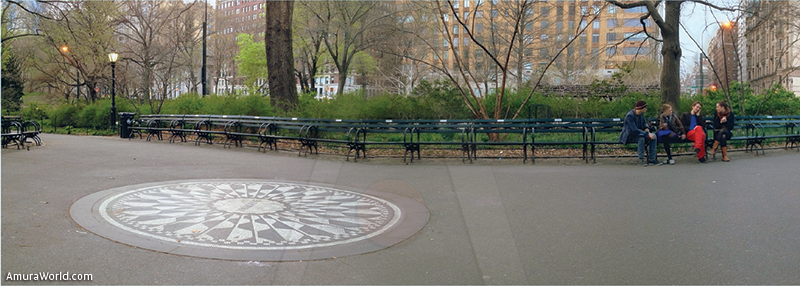
5.- The New York Berlin Wall. Five slabs that turn a coffee date at Paley Park into a moment to be part of world history.
6.- Broadway Street.- Walking through this street to pick one of the most popular productions is a must when in Manhattan.
7.- Strawberry Fields. A reference to John Lennon, who was one of the icons of music, known worldwide.
8.- Gallery of whispers.- Near the Oyster Bar & Restaurant, at Grand Central Terminal, it adopts its name from a phenomenon where people can whisper into one corner of the room, and the person in the other corner can hear it, a result of the acoustics of the Terminal.
9.- Wall Street. The heart of the financial district, it is also the seat of the New York Stock Exchange, and it is “protected” by a bronze statue of a bull in honor of the rise of Wall Street.
10.- Rose Center for Earth and Space.- A crystal cube and a 26.5 meter sphere, it is the new planetarium of the Museum of Natural History.
11. The Highline. An old elevated railway that became park inside one the most populated cities in the world.
12.- Statue of Liberty. A gift that the American government received from the French to celebrate 100 years of Independence. It is a national icon.
13.- Brooklyn Bridge Park. Tucked between the Brooklyn and Manhattan Bridge, it offers panoramic views that displays the immense building of the city, worthy of a postcard picture.
14.- Poet’s Walk. A road inside Central Park that served as an inspiration for countless writes. In the fall, its natural carpet made of falling leaves, and the contrast of colors make for a delightful walk.
15.- The whale at the American Museum of Natural History. A life-size copy of the largest animal on Earth.
16.- Staten Island Ferry. 25 minutes of mesmerizing journeying through the waters around the city, where one can enjoy the sight of the Statue of Liberty.
17.- The waters of Cleopatra at Central Park. Despite its name, it has no relation with the legendary Pharaoh. It is a gift from Egyptian dignitaries.
18.- Rockefeller Center Observation Deck.- The finest in the city, providing 360° views of the Big Apple.
19.- Temple of Dendur. It is the oldest construction in Manhattan. Located inside the Museum of Metropolitan Art.
20.- Thanksgiving Parade. Featuring the ubiquitous full-size balloons and allegoric cars, it is one of the main festivities of the city. The parade ends with an image of Santa Clause, announcing the arrival of winter.
21.- Frank Gehry’s New York. Skyscraper that opened their doors in 2011, with 76 floors, and reaching a height of 264 meters, it is a building that honors the so-called “vertical cities,” where one can find hospitals, schools, and apartment buildings.
22.- Fourth of July. Anniversary of the U.S. Independence. For thirty minutes, fireworks light up the New York skyline.
23.- Central Park. Located at the heart of Manhattan, it is a public space built over a swamp. Walking over its bridges, or listening to a concert are reasons enough to visit this imposing site.
24.- Vanguard Village. Since 1925, the best place to listen to jazz music.
25.- Horse-drawn carriages. Not only can one enjoy a ride through the city, the conductors point out important facts about it throughout the ride.
26.- Guggenheim Museum. The only petition made by the architect was that it had to be radically different from other museums already built. Despite all the criticism, it is one of the icons of contemporary architecture.
27.- Time Warner Center. This plaza is home to new twin towers, and it is also known as, “Columbus Circle,” as it recognizes the discovery of America by the Genovese explorer Christopher Columbus. Furthermore, the spot is the zero-kilometer mark of the city.
28. New York Marathon. Approximately 30 thousand people face the challenge of running through the city, while almost 2 million encourage the runners to reach the finish line.
29.- Main fountain at Bethesda Terrace. Commemorates the arrival of clean water to the city in 1842.
30.- Saint John the Divine Cathedral. With over a century of constructions, it is known as Saint John the Incomplete. It is said that it will be the largest Anglican cathedral in the world upon completion.
31.- Brooklyn Japanese garden. Alfred T. White, an eccentric magnate, builds on the city a small pong, a hill, and sets up props, of which the magnificent torii (a Japanese arc), and sanctuary dedicated to Shintoism, stand out.
32.- Queensboro Bridge. With more than 138,000 people travelling across it, it is the busiest bridge in the city.
33.- Saint Patrick’s Cathedral. Delightfully contrasting with the building around it, it is the largest cathedral in the United States.
34.- Belvedere Castle. Located at the highest point in Central Park, it is the seat of the New York Meteorological Observatory and the Henry Luce Nature Observatory.
35.- Wollman Rink. Opened throughout the year, it is an ice rink from October to April, and a cement rink the rest of year.
36.- United Nations building. It is the headquarters of the United Nations. A sculpture of a gun with a twisted barrel in its gardens symbolizes their quest for non-violence.
37.- Bethesda Terrace Gallery. Considered the heart of Central Park, it is well-known by tourists, thanks to its many appearances in television shows and films.
38.- The Cloisters. Located at the MET and specializing in mediaeval art, it is formed by five cloisters from Spain and France that harbor in its interior a gothic world donated by American fortunes.
39.- Trinity Church. Reaching 86 meters in height with its needle, it is the third church to be built on the same site. The first was consumed by a fire, the second, demolished after deemed unsafe. The site dates back to 1846.
40.- Ellis Island. Main immigration center of the city from 1892 to 1954. Approximately 12 million people went through its doors to arrive to America through the port of New York. An Irish girl named Annie Moore was the first registered person at the Ellis Island immigration center.
41.- Trump World Tower. 262 meters high, it is the tallest residential building in the United States.
42.- Children’s Garden. Located inside the Brooklyn Botanical Gardens, it is a garden that gives children the opportunity to plant whatever it is they have in mind, in order to foster the importance of nature in our lives.
43.- New York Public Library. One of the most important archives in the city. Although its management is run by a private firm, it does not serve as a commercial building due to its use by the public.
44.- The Wonders of the MET. It displays 2 million pieces from across the globe inside numerous galleries. Replicas and original works are exhibited for anyone who desires access to world history.
45.- Waldorf-Astoria. Known worldwide for its art exhibitions, and the art-deco pendulum found in its lobby.
46.- China Town. Chinese culture and traditions give it its name. Everything related to the Orient can be observed in its streets. The Chinese New Year celebrations are a sight to behold.
47.- FAO Schwarz. Founded by a German immigrant, it started out as a modest locale which, over the years, became a popular tourist attraction.
48.- Blue Note. Restaurant and jazz club considered of paramount importance to the genre. Different artists perform every night.
49.- Daniel. Elegant ambience and affable service characterize one of the finest French cuisine restaurants in New York.
50.- Aquavit. Its presentation card is its star in the Michelin guide. Furnished with rustic furniture and Nordic food, it is an excellent options for those looking to enjoy a great variety of dishes.
Text: Amura ± Photo: WPSS / RECUERDOS DE PANDORA / live design / md2 / pablo damonte / GEEGK / wkp /Bartow-Pell Mansion Museum / ASD HNY / SCOTT HANKO / HT / mpo / AMAZON / DFRNYC / ARUTEMU / Joan-Marcus / love musicals / STAICK / NETNA / NAC / GDEON / TRAVEL WES / frado f / STCX

